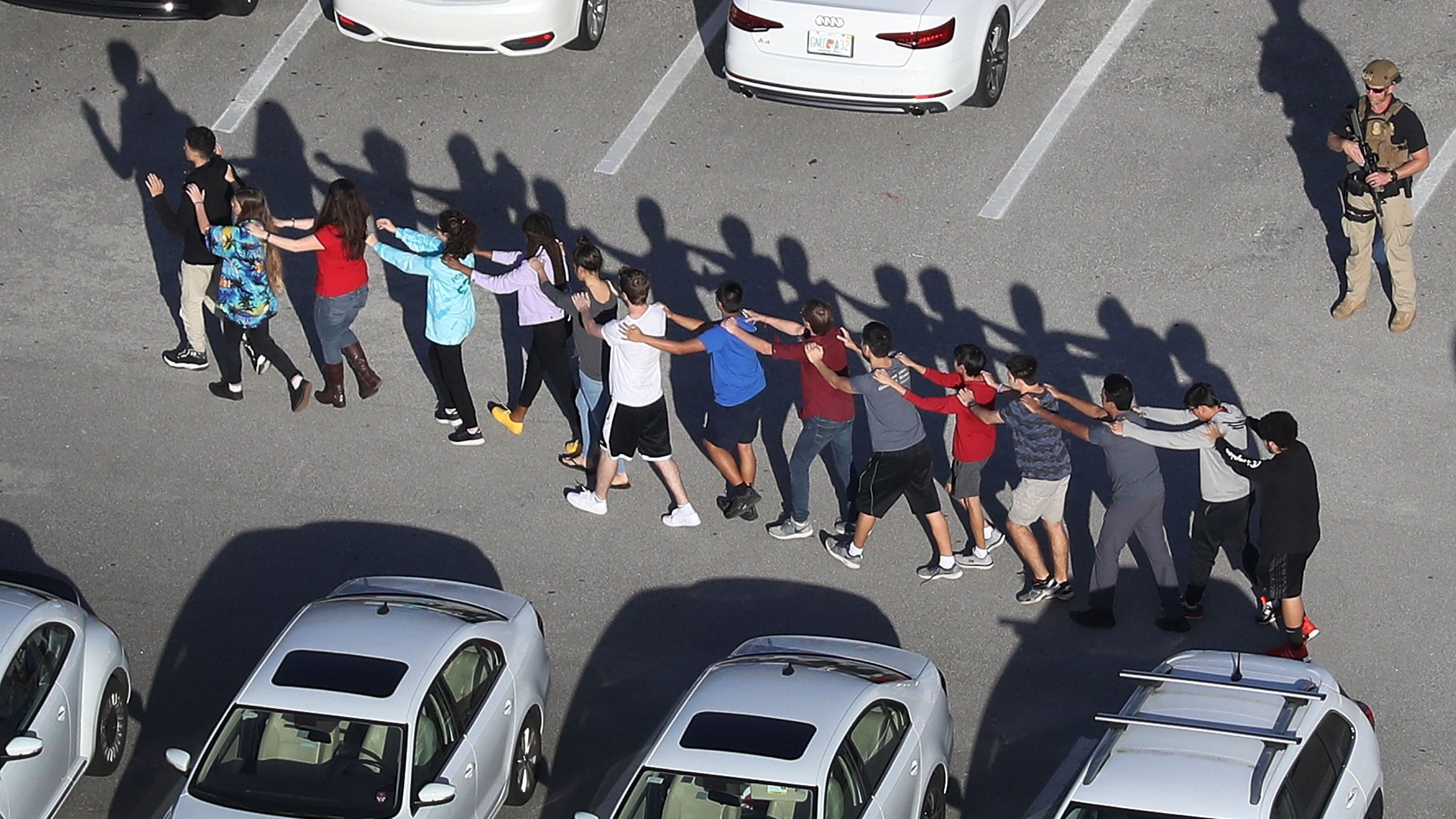On February 14, 2018, an expelled student entered Parkland, Florida’s Marjory Stoneman Douglas High School and opened fire, killing 17 people and wounding 17 others, in what became at the time the deadliest shooting at a high school in United States history.
Dressed in a maroon shirt adorned with the school logo, Nikolas Cruz exited his Uber outside the campus at 2:19 p.m. He approached the school wearing a backpack filled with magazines and carrying a black duffel packed with his legally purchased AR-15 semi-automatic rifle.
School staff had been warned after Cruz’s expulsion for "disciplinary reasons" in 2017 that the troubled teen was a risk to student safety. When a staff member saw him outside, he hesitated to call a "Code Red." The gunman was halfway through his six-minute rampage before anyone issued a warning. By then, it was too late.
Cruz entered the high school’s Freshman Building, on campus—which was mostly filled with freshman students—at 2:21 p.m. and unpacked his rifle in a stairwell. According to NBC Miami, freshman Chris McKenna, 15, spotted Cruz there and received a chilling warning from the gunman. “You better get out of here. Things are going to start getting messy.” McKenna ran outside, where he spotted Aaron Feis, a coach and school security monitor who took him to the baseball field 500 feet away and turned back to “check it out.”
Cruz exited the stairwell into a first-floor hallway, firing a stream of bullets down the corridor, shattering windows and shooting through doors. In just under two minutes, he murdered 11 people and injured 13 others. He then headed up the stairs. He was on the second floor for less than a minute, firing but hitting no one, before going to the third floor where he killed his last six victims, and injured four more in the final 45 seconds of the attack.
Terrified students ran for their lives. Others remained holed up, hiding in classrooms, closets and bathrooms, desperate to reach their parents. Many began broadcasting the horror on social media through video and live posts.
According to the South Florida Sun Sentinel, Cruz left the hallways and went to the faculty lounge, where he set up a bipod—like a tripod on which to rest the gun—reloaded his weapon and began firing, like a sniper, at the fleeing students outside. Only hurricane impact-resistant glass in the windows kept the death toll from growing.
In all, Cruz’s attack lasted less than four minutes and left 17 dead. At 2:28 p.m., just seven minutes after entering the building, he ditched the rifle in another stairwell and left the school, attempting to blend in with the crowd of escaping students. The gunman successfully left the campus, running to a Walmart at 2:50 p.m, stopping at a Subway restaurant to get a drink and eventually heading to McDonald's. He was apprehended shortly thereafter after being spotted by a Broward County police officer.
“He looked like a typical high school student, and for a quick moment I thought, ‘Could this be the person who I need to stop?’” said Officer Michael Leonard in an interview after arresting Cruz.
Broward Sheriff's deputy school resource officer Scot Peterson, who was assigned to the school that day, would later be accused of retreating during the shooting while victims were still under attack. Peterson was arrested in June 2019 and faced charges of neglect of a child, culpable negligence and perjury.
The devastation felt by the Florida community—once considered the safest city in the state—was immeasurable. Previous school shootings throughout the country had prompted Stoneman Douglas (and other schools) to practice active shooter drills, and the school had employed an armed officer on campus. But it hadn’t been enough to stop the carnage. Chants for “No More Guns!” broke out at candlelight vigils and over a thousand people showed up to funerals in the days after.
Student survivors took to social media to make their anger known, giving interviews and becoming activists for gun safety legislation. One student, David Hogg, went from school newspaper reporter to activist when his plea to legislators in a CNN interview went viral.
“Please, take action,” he begged lawmakers.
Just days after the shooting, several Marjory Stoneman Douglas students formed Never Again MSD, an anti-gun violence organization and political action committee. On March 24, these and other students helped organize the March for Our Lives, a demonstration in support of gun violence prevention. Students across the country were encouraged to stage walkouts, and a rally was held in Washington, D.C. There, advocates from around the country—some survivors of school shootings, and others whose daily lives were affected by gun violence—spoke to a crowd of thousands, demanding legislative change.
Three weeks later, Florida Governor Rick Scott, a supporter of the NRA, responded. He signed a bill imposing a 21-year-old legal age requirement for gun purchases and a three-day waiting period on all gun transactions. The law also controversially permitted the arming of some school employees. It was the first time in 30 years Florida had passed any gun control measures, though many felt the legislation did not go far enough.
During the summer and fall of 2018, Never Again MSD traveled throughout the country on a bus tour advocating for gun control and voter registration. The group visited 30 states and registered some 50,000 voters.
Nikolas Cruz was charged with 17 counts of first-degree murder and 17 counts of attempted murder. He later pleaded guilty to all charges.
